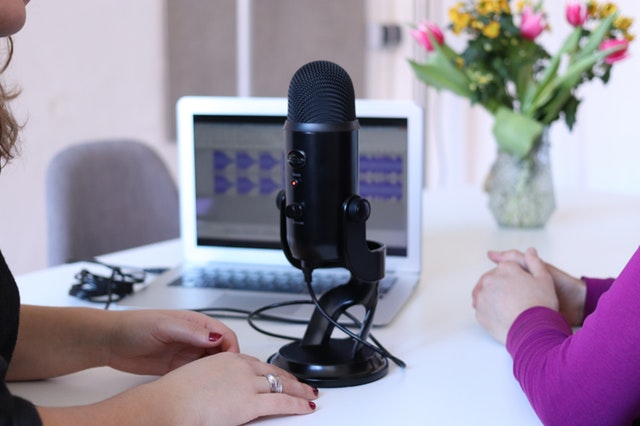Decades ago, the vision of the future was hoverboards, holographs, and flying cars. But technology, it seems ended up taking the world down a rather different path. The question is, where to from here? How can we expect the tablets, phones and internet of today to evolve in the future, and what dangers or pitfalls do we need to be aware of?
Leaders in Heels had a chat with Shara Evans, a leading expert in the telecommunications industry and a widely respected technology futurist. Read on to see her thoughts on the future of technology!
1. First of all, how would you describe the title of “Technology Futurist”, and the kind of role you play?
I seek to connect the dots on the evolution of technology and how it will impact humanity
As a technology futurist, I seek to connect the dots on the evolution of technology and how it will impact humanity — enabling people and businesses to peer over the horizon, see what’s coming, and make informed choices about the future we’re creating.
I track a wide range of cutting edge technology developments by examining what’s happening in research labs, talking to global thought leaders about these developments and the latest scientific advances, and then I use my imagination to put it together into scenarios of what our future will look like.
I use these insights to help companies harness the fast moving world of technology innovation to develop new lines of business, as well as helping them assess their strengths, weakness, potential opportunities and threats from emerging technologies. I then work with them to develop a disruptive competitive advantage. And, I regularly speak about futuristic and technology topics at public and private events.
Areas that I cover include: telecommunications services and technologies, smartphones + other devices, wearable tech, implantable tech, sensors, augmented reality, virtual reality, holographic displays, home automation (and the many different types of Internet-connected devices within homes), drones (transport industry, spying, hacking), robotics, cars of the future, 3D printing, cloud services, security + privacy, and the next wave of innovation.
2. Everything is increasingly connected these days – there are nifty gadgets like the Twine that can tell you when your washing is done, or if your mailbox is open, for example. Where do you see these simple beginnings going in the future?
Ultimately, everything is going to be connected… even our bodies will be connected to the ‘netUltimately, everything is going to be connected, every gadget that we own, our homes, our cars, our clothing, and even our bodies will be connected to the ‘net.
Already, there are pills (for example, by Proteus) that contain embedded microprocessors that can communicate with a skin patch to do things like alert your doctor that you’ve taken your medicine (important for elderly patients), or that can turn your body into a biometric password device. In the later case, your gastric acids activate the pill, triggering it to transmit an EKG-like signal from your body, which can then be used to unlock devices such as a smartphone or provide password authentication for services.
The integration of biotech and electronics has huge implications. We’re going to see a future where literally everything that can be connected will be. In your home, this will include lights, thermostats, wine cellars, washing machines, TVs, security systems, webcams, window shades, door locks — anything that can be attached to smart electronics.
Weldon refers to it as a digital sixth sense — the avatar will know what you want before you do!Your car will be connected, and by 2020 we’ll start to see driverless cars on our roads. They’ll be loaded with sensors, all of which will connect to the Internet. Our cities will be filled with sensors that monitor pollutants, moisture, traffic, structural road conditions, recycling bin fill levels, and so much more!
I was recently speaking with Dr Marcus Weldon, the head of Bell Labs about the Internet of Things. He expects that it could comprise hundreds of objects per person in the very near future. And, the team at Bell Labs is working on a digital avatar that will connect people to their objects in interesting ways so that you could talk to all your objects by having a digital representation of them in the cloud, and it will learn how you associate with them. Weldon refers to it as a digital sixth sense — the avatar will know what you want before you do!
3. The idea of keeping all our data in the cloud – and being able to access it anywhere, any time – is an increasingly popular concept these days. How do you see this shaping how we view and use technology?
The concept of cloud-based storage, ubiquitous access, and the mashing of data sets is hugely appealing. It does, however, need to be balanced with security and privacy safeguards. The amount and types of data that people willingly share on social media is growing, and becoming increasingly personal with new healthcare and home automation services on the horizon.
I urge caution here. Before trusting your most personal information to a cloud-based service you want to be sure that it’s encrypted, and that it won’t be used for unauthorised purposes. At a minimum, ask who owns the service, who has access to the data, will it be sold to third parties, can it be combined with other personal information in ways that could harm you — such as providing a platform for identity theft.
Before trusting your most personal information to a cloud-based service you want to be sure that it’s encrypted, and that it won’t be used for unauthorised purposes.
People are starting to wake up to the fact that privacy isn’t about what you have to hide, rather, it’s about what you want to protect. One recent initiative in this area is the Respect Network, which is a cloud based service that was designed with privacy in mind.
I also see a growing market niche for companies that position themselves as ethical service providersAnd, increasingly it’s about not wanting to be manipulated. There’s been a huge backlash against Facebook after people found out about their secret emotional manipulation experiment. And a few days ago we learned that OKCupid, a dating website, engaged in similar practices — toying with 30 million people, and claiming this was standard practice for the Internet!
Regulators in the USA and UK are already being called upon to look into the Facebook experiment, and OKCupid may very well be next. Social media is largely unregulated, but I think this could change rapidly. We’ve already seen the EU’s ‘right to be forgotten’ ruling, which is forcing Google to amend search results that contain “inadequate, irrelevant or no longer relevant” data when a member of the public requests it.
I also see a growing market niche for companies that position themselves as ethical service providers, putting privacy and security as a key component of their service delivery model.
4. Of course, a result of revealing all this additional information – even for something as innocuous as Google being able to tell you how to go “Home” – can be a dangerous thing. What are some key privacy issues people should be aware of, and what are some simple steps they can take to protect themselves?
The unfortunate reality is that privacy breaches happen on a regular basis.There are a number of things to look out for: companies that collect and sell your personal information (the social media model), apps that collect personal data — including things that the app has no need to access, like the flashlight app that spied on end-users for profit, and susceptibility to data breaches.
The first step starts with awareness, and taking prudent steps to protect your sensitive information. Think twice before posting! And, wherever possible use encryption, preferably where you control the encryption key. Before downloading and using a new app, check the permissions it’s requesting. Be wary of apps that want access to your address book or location services, unless there’s a legitimate need to know.
The unfortunate reality is that privacy breaches happen on a regular basis. Two weeks ago it was Cupid Media, last week it was Catch of the Day. Next week it will be something else. The best protection is to understand what you’re sharing in the first place. And, if you’ve been notified of a data breach that’s impacted the integrity of your data, take timely appropriate actions.
If you enjoyed reading about Shara’s thoughts on the future of technology, you can find more of her talks at Market Clarity, her company’s website. Thanks to Shara for her time!



 Originally from Melbourne, Veronica has now found her home in Sydney and a place where all of her passions can thrive – LinkedIn. Veronica works with small to medium businesses to position them as an employer of choice on the LinkedIn network and educates business leaders how to network most effectively in the digital space.
Originally from Melbourne, Veronica has now found her home in Sydney and a place where all of her passions can thrive – LinkedIn. Veronica works with small to medium businesses to position them as an employer of choice on the LinkedIn network and educates business leaders how to network most effectively in the digital space.
 Rosemary Brown is a business and market researcher with over 20 years of experience. She has been extensively involved in exploring the impact of technological innovations on business organizations, enterprise culture and organizational processes. Currently, Rosemary is conducting a series of experiments to study the impact of web-based help desk tools like
Rosemary Brown is a business and market researcher with over 20 years of experience. She has been extensively involved in exploring the impact of technological innovations on business organizations, enterprise culture and organizational processes. Currently, Rosemary is conducting a series of experiments to study the impact of web-based help desk tools like 

